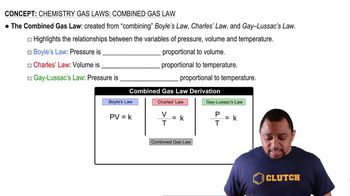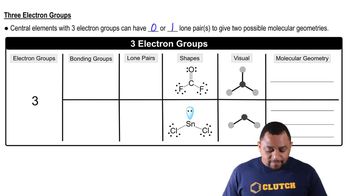Ch.23 - Organic and Biological Chemistry
Chapter 23, Problem 119
How many tetrapeptides containing alanine, serine, leucine, and glutamic acid can you form? Use the three-letter abbreviations to name three.
 Verified step by step guidance
Verified step by step guidance1
Step 1: Understand that a tetrapeptide is a peptide consisting of four amino acids linked by peptide bonds.
Step 2: Identify the four amino acids given: alanine (Ala), serine (Ser), leucine (Leu), and glutamic acid (Glu).
Step 3: Recognize that the number of different tetrapeptides that can be formed is determined by the number of permutations of the four amino acids.
Step 4: Calculate the number of permutations of four distinct items, which is given by 4! (4 factorial).
Step 5: Use the three-letter abbreviations to name three possible tetrapeptides, such as Ala-Ser-Leu-Glu, Ser-Leu-Glu-Ala, and Leu-Glu-Ala-Ser.
Key Concepts
Here are the essential concepts you must grasp in order to answer the question correctly.
Peptide Formation
Peptides are formed by the linkage of amino acids through peptide bonds, which occur between the carboxyl group of one amino acid and the amino group of another. In the case of tetrapeptides, four amino acids are combined in a specific sequence, leading to a variety of possible structures based on the order of the amino acids.
Recommended video:
Guided course

Enthalpy of Formation
Amino Acid Combinations
The number of unique tetrapeptides that can be formed from a set of four different amino acids is calculated using permutations. Since the order of amino acids matters in determining the structure and function of the peptide, the total combinations can be found using the factorial of the number of amino acids, which in this case is 4! (4 factorial).
Recommended video:
Guided course

Combined Gas Law
Three-Letter Abbreviations
Amino acids are often represented by three-letter abbreviations for convenience in biochemical contexts. For alanine, serine, leucine, and glutamic acid, the abbreviations are Ala, Ser, Leu, and Glu, respectively. These abbreviations are used to succinctly denote the amino acids in sequences and structures, making it easier to communicate complex biochemical information.
Recommended video:
Guided course

Molecular Geometry with Three Electron Groups
Related Practice
